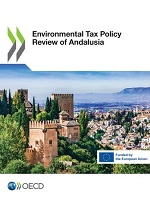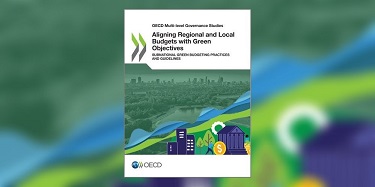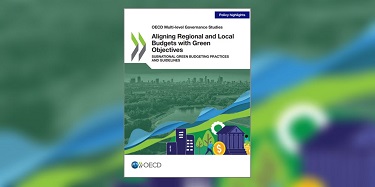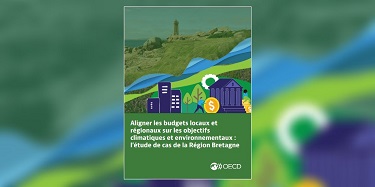Regional, rural and urban development
Subnational Green Budgeting
Better aligning regional and local budgets with green objectives
|
The Paris Collaborative on Green Budgeting, established in 2017 with the OECD serving as the Secretariat, aims to design new, innovative tools for national and subnational governments to better align national expenditure and revenue processes with climate and other environmental goals. Green budgeting is a priority-based budgeting approach that uses the tools of budgetary policymaking to help governments at all levels achieve environmental and climate objectives. Examples of green budgeting tools include green impact assessments, green budget tagging, applying a green lens to expenditure reviews, and environmental fiscal reform, among others. Several regional and local governments across the OECD are experimenting this approach as a decision-making tool to help align their expenditure and revenue with their green objectives. Our work includes Subnational Green Budgeting Guidelines, a self-assessment tool and case studies. |
 |
Publications
|
Aligning Regional and Local Budgets with Green Objectives: Subnational Green Budgeting Practices and Guidelines |
Aligning Regional and Local Budgets with Green Objectives: Policy Highlights |
Aligner les budgets locaux et régionaux sur les objectifs climatiques et environnementaux: l'étude de cas de la région Bretagne |
||
|
This OECD-European Commission report presents a first stocktake of subnational green budgeting practices in OECD and EU countries, as well as a set of guidelines for subnational governments to use in developing their own green budgeting practice or strengthen an existing one. |
The report "Aligning Regional and Local Budgets with Green Objectives" is completed by policy highlights, available in English, French, Spanish and Italian. |
The case study of the Brittany region (France) is taken from the report "Aligning regional and local government budgets with climate and environmental objectives". The case study presents the region's recent experiments in green budgeting and the lessons that can be learned from them. |
Tools
Subnational Green Budgeting Guidelines |
Self-assessment Tool |
||
 |
In order to help regions and cities overcome the challenges of developing and implementing a green budgeting approach, the OECD has developed a set of six key guidelines. Subnational governments of all sizes and types can use these guidelines to launch their own green budgeting practice or strengthen an existing one. |
 |
The guidelines are complemented by a self-assessment tool that all regions and cities can use to identify their strengths and potential gaps for starting a green budgeting practice or improving an existing one. Self-assessment Tool (English) | Outil d'auto-évaluation (français) |
|
Related reports |
|
 |
Environmental Tax Policy Review of Andalusia
Subnational green budgeting is also about how to better mobilise revenue to align with environmental goals. The Environmental Tax Policy Review of Andalusia, a joint report led by CTP in co-operation with CFE and ENV, and funded by the European Commission, provides a detailed review of the environmentally related tax framework in the areas of greenhouse gas emissions and air pollution, water usage and pollution, and waste and circular economy in the Autonomous Region of Andalusia, Spain. The report also provides strategic recommendations to support Andalusia to improve environmental outcomes and enhance national and global environmental performance. Report | Executive summary (English) | Resumen (español) | Technical summary (English) | Resumen técnico (español) |
Related Documents


